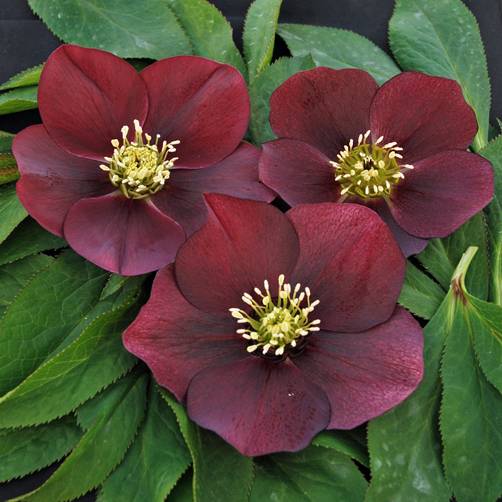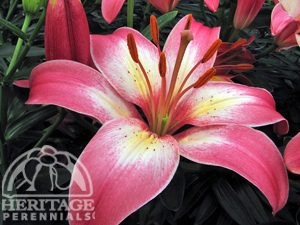Keeping Early Purchased Perennials Alive
Perennials 101, Seasonal Activities through the Year
While visiting those wonderful spring garden shows (like the Philadelphia Flower Show or Canada Blooms), it’s hard to resist the urge to purchase at least a few plants, only to get home later and realize it’s probably too early to plant them directly outside. Keeping them alive and healthy until mid-spring is really quite simple.

Here are a few tips on what to do with them in the meantime:
1. Keep them outside as much as possible. Plants that have been gently “forced” for shows will stay more compact and healthy outside where the temperatures are cooler. If the thermometer drops below freezing, either bring them indoors to wait it out, or into an unheated shed or garage that remains frost-free. Regular indoor room temperature is just too warm.
2. Keep them evenly moist. Perennials in pots generally don’t like to be soggy or bone dry. Small pots might need to be watered two or three times a week. If in doubt, poke your finger into the soil or feel the weight of a freshly watered pot in your hand to compare with a dry one.
3. With Primroses (Primula), be sure to remove any spent flowers regularly as well as yellowing or dead leaves. This will help to prevent botrytis rot from developing. Enjoy them indoors for a few days if you must, then get them into the garden a couple of weeks ahead of the frost-free date. They thrive in cool spring weather!
4. Give your plants plenty of light. You would be amazed at how many people purchase plants early and then stick them in a dark basement or garage only to wonder later why they died.
5. If tall-growing perennials get too floppy before it’s warm enough to plant them outdoors, you can always cut them back. The two exceptions: peonies and true lilies.
6. Pots of forced bulbs can be enjoyed indoors until they finish blooming, then put outside in a sunny place to ripen their foliage naturally. Keep them regularly watered until the leaves begin to turn completely yellow. Then, let the pots dry out and once the foliage has turned brown, remove the bulbs from the soil and either plant them immediately somewhere in the garden, or hold them in paper bags in the shed until late summer or early fall. Tulips and Hyacinths are often not worth saving, but most other spring bulbs will usually settle in nicely and are worth the effort to try and salvage.

7. Lily bulbs can handle a lot of cold weather, even a few degrees of frost. Pot them up if you like, and stick them directly outside. They will come up in mid to late spring, and can then be moved into the garden. Either pot one bulb to a four inch pot, or put two or three in a six inch pot. They can easily handle about 5 degrees of frost at night, or put them into a garage or shed during a sudden cold snap. If lilies already have long white or green shoots, it might be best to get them started in pots indoors.